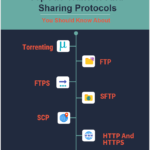Alternatives to RACI: Explore Top Project Management Models

In the dynamic world of project management, the RACI matrix has long been a staple tool, helping teams clarify roles and responsibilities. However, as projects become more complex and teams more diverse, the limitations of RACI have become apparent. This has led many to seek alternatives to RACI that might offer more flexibility, agility, or clarity for their specific project needs. In this comprehensive exploration, we delve into a variety of project management models that serve as alternatives to RACI, each with its unique approach to defining team roles and responsibilities.
- DACI (Driver, Approver, Contributor, Informed)
- RAPID (Responsible, Accountable, Perform, Input, Decide)
- Agile Methodologies
- Self-organizing Teams
- MOCHA (Manager, Owner, Consulted, Helper, Approver)
- PACSI (Perform, Accountable, Control, Suggest, Inform)
- CAIRO (Consulted, Approver, Informed, Responsible, Owner)
- Linear Responsibility Chart (LRC)
- Scrum Framework
- Kanban Methodology
- Holacracy
- Sociocracy or Dynamic Governance
- ORACI (Owner, Responsible, Accountable, Consulted, Informed)
- SAFe (Scaled Agile Framework)
- LeSS (Large Scale Scrum)
- DA (Disciplined Agile)
- OKRs (Objectives and Key Results) for Role and Goal Alignment
- GROW (Goal, Reality, Options, Will) Model for Task and Performance Management
- CLEAR (Collaborative, Limited, Emotional, Appreciable, Refinable) Goals for Agile Environments
DACI (Driver, Approver, Contributor, Informed)
The DACI decision-making framework is a popular alternative to RACI that simplifies the process of making decisions within teams. It is particularly useful in scenarios where quick, decisive action is needed. The Driver is responsible for leading the project and moving it forward. The Approver makes the final decision, while Contributors provide input and expertise. Lastly, those who are Informed are kept up-to-date on progress and outcomes. This model emphasizes a streamlined approach to decision-making, with clear delineations between roles.
RAPID (Responsible, Accountable, Perform, Input, Decide)
RAPID is another alternative to RACI that focuses on clarifying who has the authority to make decisions. It breaks down the decision-making process into five distinct roles: Responsible (those who do the work to complete the task), Accountable (the one ultimately answerable for the correct and thorough completion of the task), Perform (those who perform the task), Input (those who provide input that the Performer needs), and Decide (the person who makes the final decision). This framework is particularly useful in organizations where decision-making processes are complex.
Agile Methodologies
Agile methodologies offer a broad alternative to RACI by focusing on iterative development, collaboration, and flexibility. Unlike RACI, which assigns specific roles and responsibilities, Agile encourages roles that are more fluid, allowing team members to adapt to the needs of the project as it evolves. This approach is ideal for projects that require rapid adaptation to changing requirements.
Self-organizing Teams
Self-organizing teams represent a radical departure from the structured approach of RACI. In this model, teams are given the autonomy to define their own roles and responsibilities based on the project's needs and the team members' skills and interests. This alternative to RACI is based on the principle that those doing the work are best positioned to understand how to do it effectively. It requires a high level of trust and communication but can lead to highly motivated and efficient teams.
MOCHA (Manager, Owner, Consulted, Helper, Approver)
The MOCHA model is a nuanced alternative to RACI that provides a clear framework for accountability and decision-making. It defines five roles: Manager (who oversees the project), Owner (who is responsible for execution), Consulted (those whose opinions are sought), Helper (those who assist with tasks), and Approver (who makes final decisions). This model is particularly useful for organizations looking to balance autonomy with accountability.
PACSI (Perform, Accountable, Control, Suggest, Inform)
PACSI is a comprehensive framework that serves as an alternative to RACI, offering a detailed approach to defining roles within complex projects. It includes Perform (those who carry out tasks), Accountable (those ultimately responsible), Control (those who have veto power), Suggest (those whose advice is sought), and Inform (those who need to be kept informed). This model is ideal for projects that involve multiple stakeholders with varying degrees of influence and interest.
CAIRO (Consulted, Approver, Informed, Responsible, Owner)
CAIRO is an alternative to RACI that emphasizes the importance of consultation and approval in the project management process. It is similar to RACI but adds an Owner role to clarify who owns the overall project. This model is particularly useful in environments where ownership and accountability need to be clearly defined.
Linear Responsibility Chart (LRC)
The Linear Responsibility Chart (LRC) is a visual tool that serves as an alternative to RACI, mapping out responsibilities across different phases of a project. Unlike RACI, which focuses on roles, LRC focuses on tasks and the individuals responsible for them at each stage of the project. This approach is useful for complex projects that require detailed planning and coordination.
Scrum Framework
The Scrum framework is a popular Agile methodology that can be considered an alternative to RACI. It divides the project into sprints, short, time-boxed periods where specific tasks are completed. Roles in Scrum are less about specific responsibilities and more about fulfilling the needs of the team to complete the sprint goals. This model is ideal for projects that benefit from incremental development and frequent reassessment of priorities.
Kanban Methodology
Kanban is another Agile methodology that offers an alternative to RACI by focusing on continuous delivery and efficiency. It uses a visual board to track work as it moves through various stages of the process. Roles in Kanban are flexible, with team members pulling work as they are able to, rather than being assigned specific tasks. This model is best suited for projects that require a high degree of flexibility and adaptability.
Holacracy
Holacracy is a radical alternative to RACI that replaces the traditional hierarchy with a system of self-organizing circles. Each circle operates autonomously and is responsible for a specific domain of work. Roles within circles are defined around the work that needs to be done, rather than job titles or functions. This model is designed to distribute authority and decision-making throughout the organization, making it ideal for companies seeking to increase agility and innovation.
Sociocracy or Dynamic Governance
Sociocracy, also known as dynamic governance, is an alternative to RACI that emphasizes egalitarian principles and collective decision-making. It uses a system of linked circles (similar to Holacracy) where each circle makes decisions based on consensus. Roles are defined within circles, but with a focus on equivalence and effectiveness. This model is best suited for organizations committed to democratic principles and collaborative work environments.
ORACI (Owner, Responsible, Accountable, Consulted, Informed)
ORACI is a variation of RACI that adds an Owner role to clarify who has overall ownership of the project or task. This alternative to RACI is useful in clarifying the hierarchy of accountability and ensuring that there is a clear point of responsibility for the project's success. It is particularly useful in complex projects where multiple stakeholders are involved.
SAFe (Scaled Agile Framework)
SAFe is a comprehensive framework that provides guidance for scaling Agile practices across large organizations. It is an alternative to RACI in that it offers a structured approach to managing large, complex projects with multiple Agile teams. SAFe defines roles, responsibilities, and processes at the team, program, and portfolio levels, making it ideal for enterprises looking to implement Agile at scale.
LeSS (Large Scale Scrum)
LeSS is another framework designed to scale Scrum to large organizations. As an alternative to RACI, LeSS focuses on simplifying the organizational structure and minimizing bureaucracy, allowing for more direct communication and collaboration. It defines roles and responsibilities in a way that promotes flexibility and responsiveness, making it suitable for companies looking to adopt Agile methodologies in large, complex projects.
DA (Disciplined Agile)
Disciplined Agile (DA) is a process decision framework that offers a comprehensive toolkit for organizations seeking to implement Agile and Lean practices. It serves as an alternative to RACI by providing guidance on how to choose and evolve your project management practices based on the unique context of your project and organization. DA emphasizes flexibility, customer focus, and continuous improvement, making it ideal for organizations looking to tailor their Agile practices to their specific needs.
OKRs (Objectives and Key Results) for Role and Goal Alignment
OKRs (Objectives and Key Results) offer a goal-setting framework that can serve as an alternative to RACI for aligning team roles and responsibilities with organizational objectives. OKRs focus on setting measurable goals (Objectives) and defining specific, quantifiable outcomes (Key Results) to achieve those goals. This model promotes transparency, accountability, and alignment across teams, making it ideal for organizations looking to ensure that everyone is working towards the same objectives.
GROW (Goal, Reality, Options, Will) Model for Task and Performance Management
The GROW model is a coaching framework that can be applied to task and performance management as an alternative to RACI. It guides individuals and teams through the process of setting Goals, assessing the current Reality, exploring Options, and determining the Will to proceed. This model is particularly useful for personal development and team building, as it encourages self-reflection and proactive problem-solving.
CLEAR (Collaborative, Limited, Emotional, Appreciable, Refinable) Goals for Agile Environments
The CLEAR goals framework is designed for Agile environments and serves as an alternative to RACI by emphasizing goals that are Collaborative, Limited in scope, Emotional to create engagement, Appreciable into smaller tasks, and Refinable as new information becomes available. This approach is ideal for projects that require flexibility and adaptability, as it allows teams to adjust their goals and strategies in response to changing conditions.
While the RACI matrix has been a valuable tool for defining roles and responsibilities in project management, there are numerous alternatives to RACI that offer different approaches to suit the varying needs of projects and organizations. From decision-making frameworks like DACI and RAPID to Agile methodologies and goal-setting models like OKRs and CLEAR, project managers have a wealth of options to choose from. The key is to understand the unique requirements of your project and team and select the model that best facilitates collaboration, efficiency, and success.




Leave a Reply